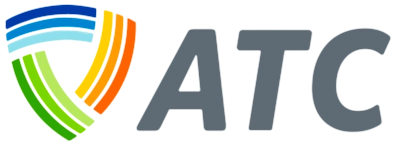Aerial helicopter patrols are a valuable tool that American Transmission Co. deploys to periodically inspect our transmission lines.
Riding shotgun next to the pilot is the patrol inspector, who looks out of the helicopter and records information into a tablet. That information is downloaded into a database that allows ATC to determine needs and priorities, and process maintenance work orders.
Patrol inspectors need to pay close attention to details and to be very aware of their surroundings – watching for wires, antennas and other objects that could be hazardous. Their job requires specific qualifications and ongoing training to be both safe and effective.
“Aerial patrols remain a key tool to monitor our transmission lines and capture the areas that we need to address for both transmission line maintenance and vegetation management,” said Michelle Stokes, manager of transmission line maintenance and vegetation management.
In spring, patrol inspectors look for any areas of concern or deficiencies to the system following winter to help ATC take corrective action before summer’s heavy power use and storms. Aerial patrols will identify items to be addressed like split pole tops, broken conductor strands, washouts near structures and leaning trees.
In the summer, when vegetation has grown and leafed out, patrol inspectors look for any hazard trees or areas that the vegetation management team needs to address.
“The number of issues identified during aerial patrols has declined over the past five years, mainly due to our work to reclaim the rights-of-way,” said Stokes. “At the same time, it’s allowed us to monitor the extent of the spread and impact of emerald ash borer across our footprint. This insect is wreaking havoc on ash trees and increasing the number of hazard trees we need to assess – and potentially remove – along our rights-of-way.”
In the fall, patrol inspectors will also cover portions of the transmission system impacted by summer weather events or areas of critical facilities. This provides ATC time to address any significant issues before the risk of extreme cold weather sets in.
While drones have been considered for aerial patrols, the human “eyes in the sky” aboard a helicopter still offer the most economical option for comprehensive annual inspections. Drones can be a suitable tool when ATC needs detailed, targeted inspections. However, when it comes to analyzing, determining and communicating which system elements need our attention, people still do it best.
